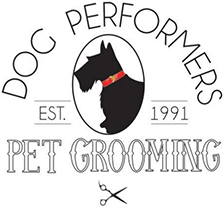Frequently Asked Questions
Veteran Discounts | Free Estimates | Competitive Pricing
Veteran Discounts
Free Estimates
Competitive Pricing
Dog Performers FAQ
Have a question about grooming? We have the answer. Check out these FAQs and give us a call today for more information!
Important Tips You May Not Know
- Raising your pet’s food and water up from the floor will make it easier for your pet to swallow and your pet will be more comfortable during eating.
- Using a metal water or food bowl outside is dangerous. During the winter much like you, your pet’s tongue could stick to cold metal. During the summer these bowls can get very hot. Only use metal bowls inside.
- Changing your pet’s diet to an all-natural type diet can improve your pet’s health. Ask your veterinarian about this.
- Heartworms are very dangerous to your pet. Year-round medication is necessary to prevent this. You veterinarian can take care of this.
- Oral health is an area that can extend your pet’s life, some say, as much as five years. Your veterinarian can help you with any questions you might have.
- It’s a good idea to do a body examination of your pet about once a month looking for any rashes, lumps or growths. Early detection can help to save your pet from later danger.
- If your pet gets an ear infection and you go to your veterinarian, you might want to have your pet checked for allergies. A lot of pet ear infections are associated with allergies. Otitis is another ear problem which causes discomfort to your pet. Here’s a good link to learn more about this problem. Click here
- Did you know that dogs can only sweat through two areas? Panting, leaving sweat to drip off the tongue, and through the pads of their feet.
- When you have a swimming pool around your pet, make sure that you train your pet properly to avoid any accidents.
- A danger in the home for pets is hanging cords. Long phone cords or drapery cords can be deadly to a pet if it gets caught around the neck. Another cord problem is electrical cords. If your pet likes to chew around the house, you have to make sure these are inaccessible.
- Male dogs should be neutered around five to six months of age. Male dogs neutered at five to six months are usually not as aggressive. They will not be as combative and they are less territorial. They may also be less prone to hormone type tumors and prostate cancer later on. Male dogs neutered after they get older will show a decrease in the aforementioned problems, but it will not be as effective. But it’s never too late to neuter a male dog.

Share On: